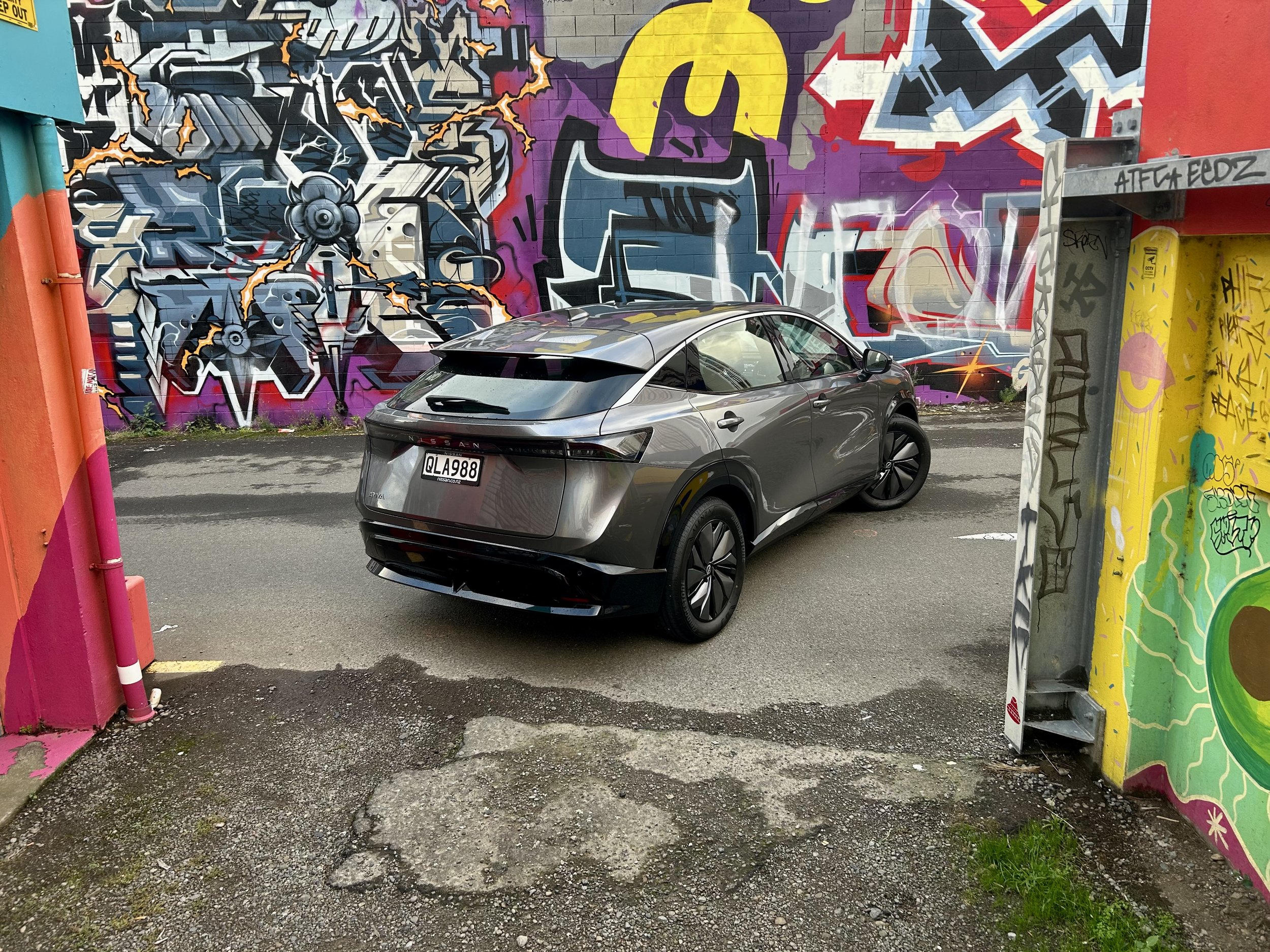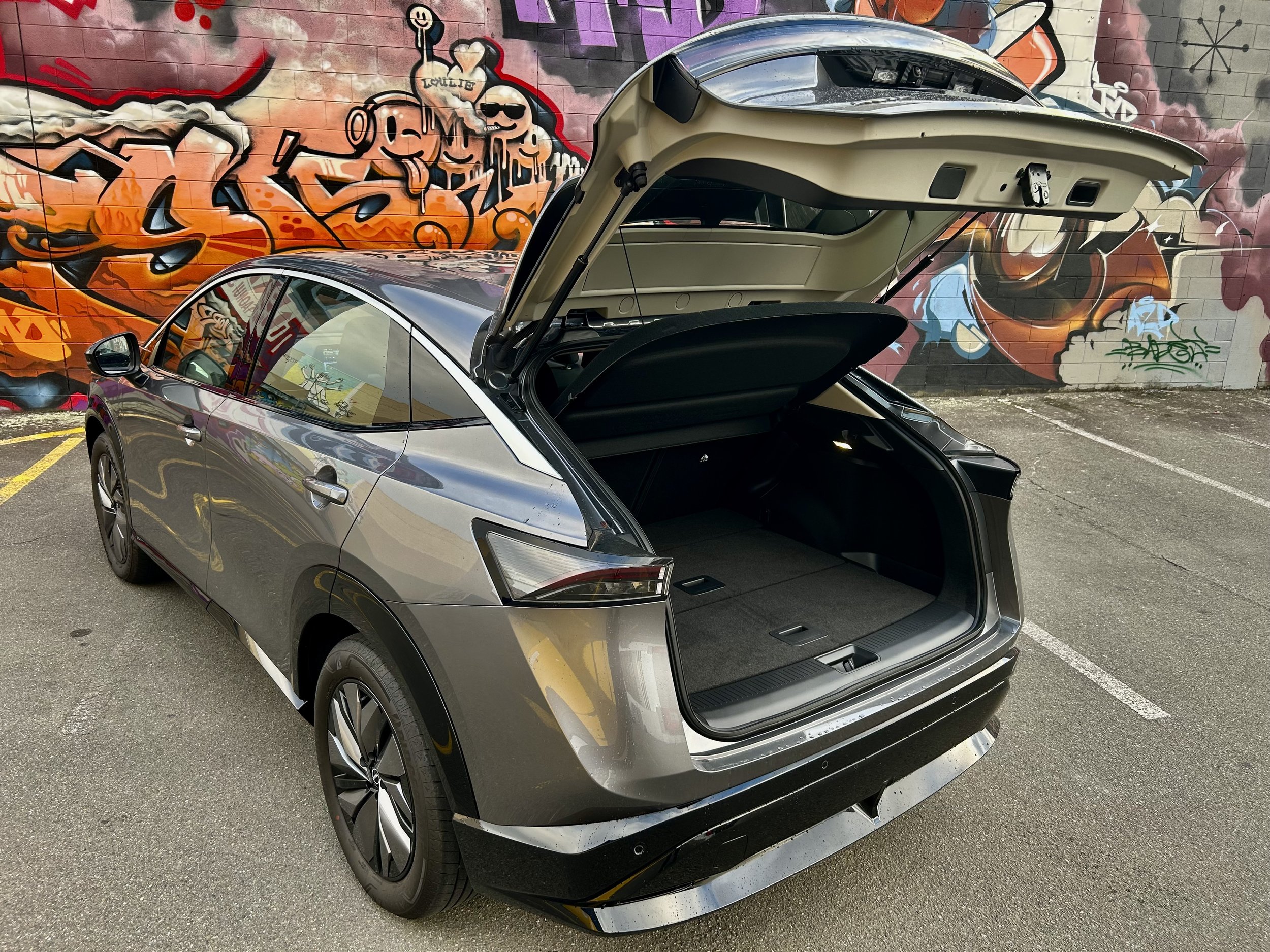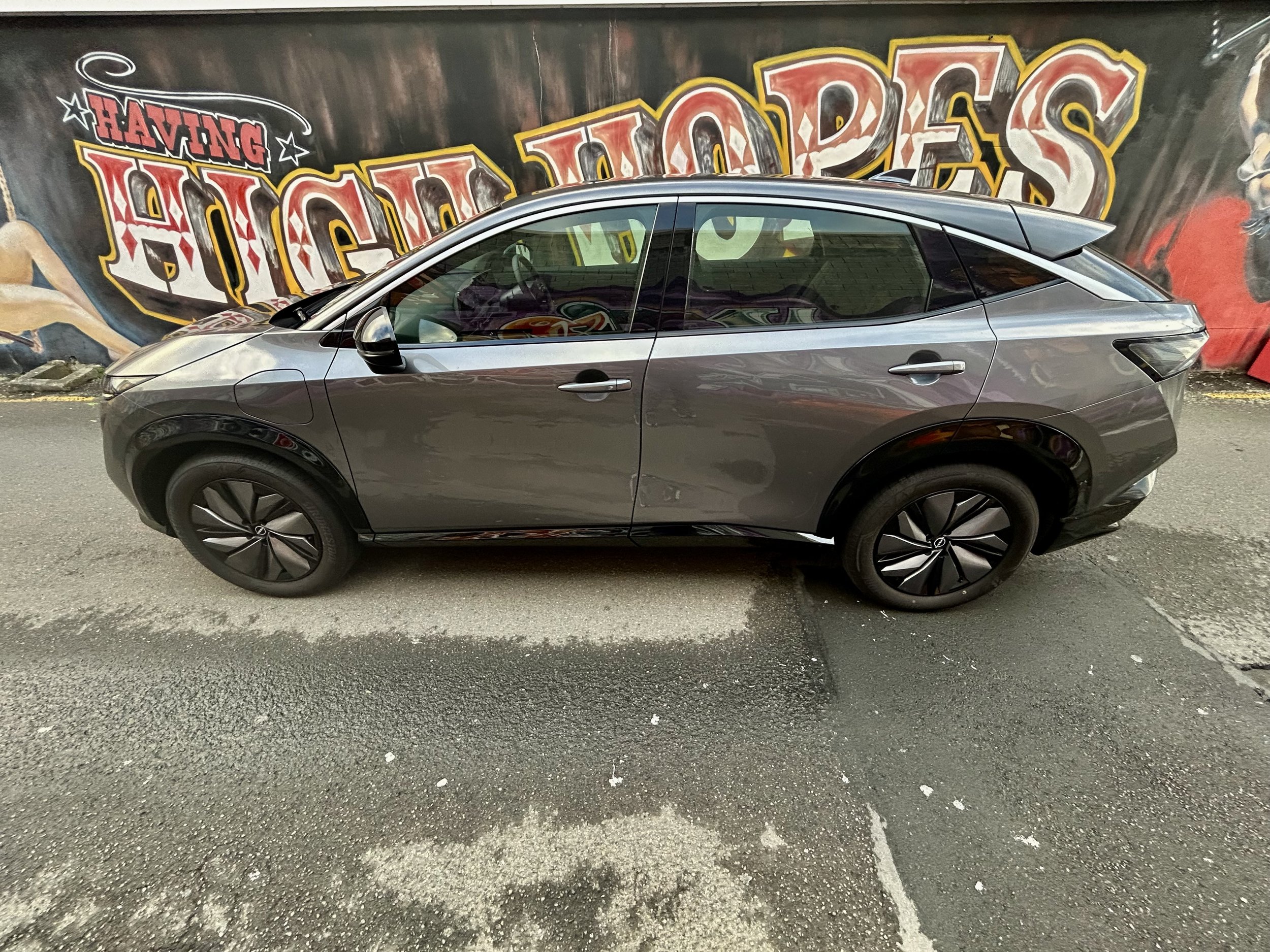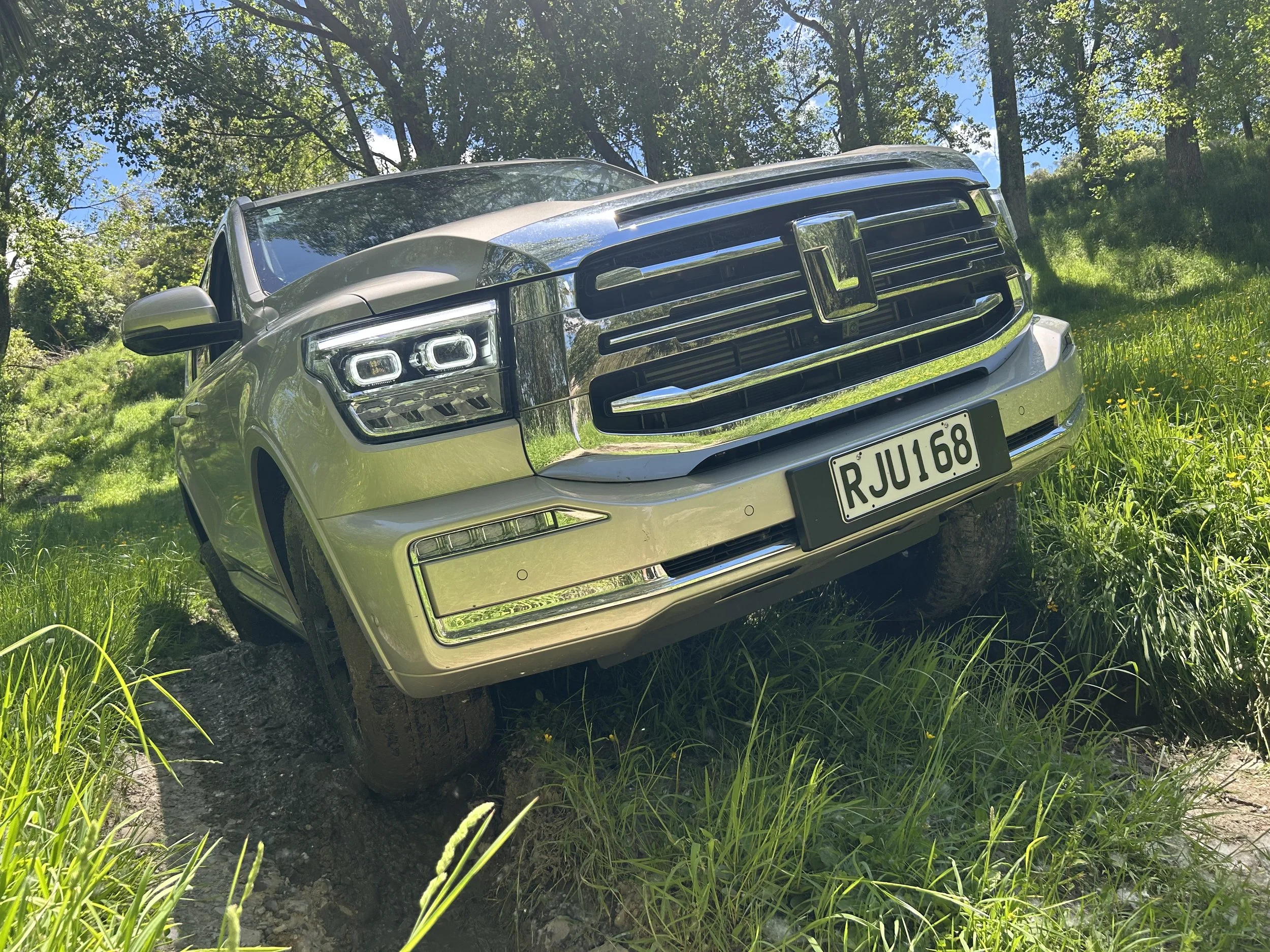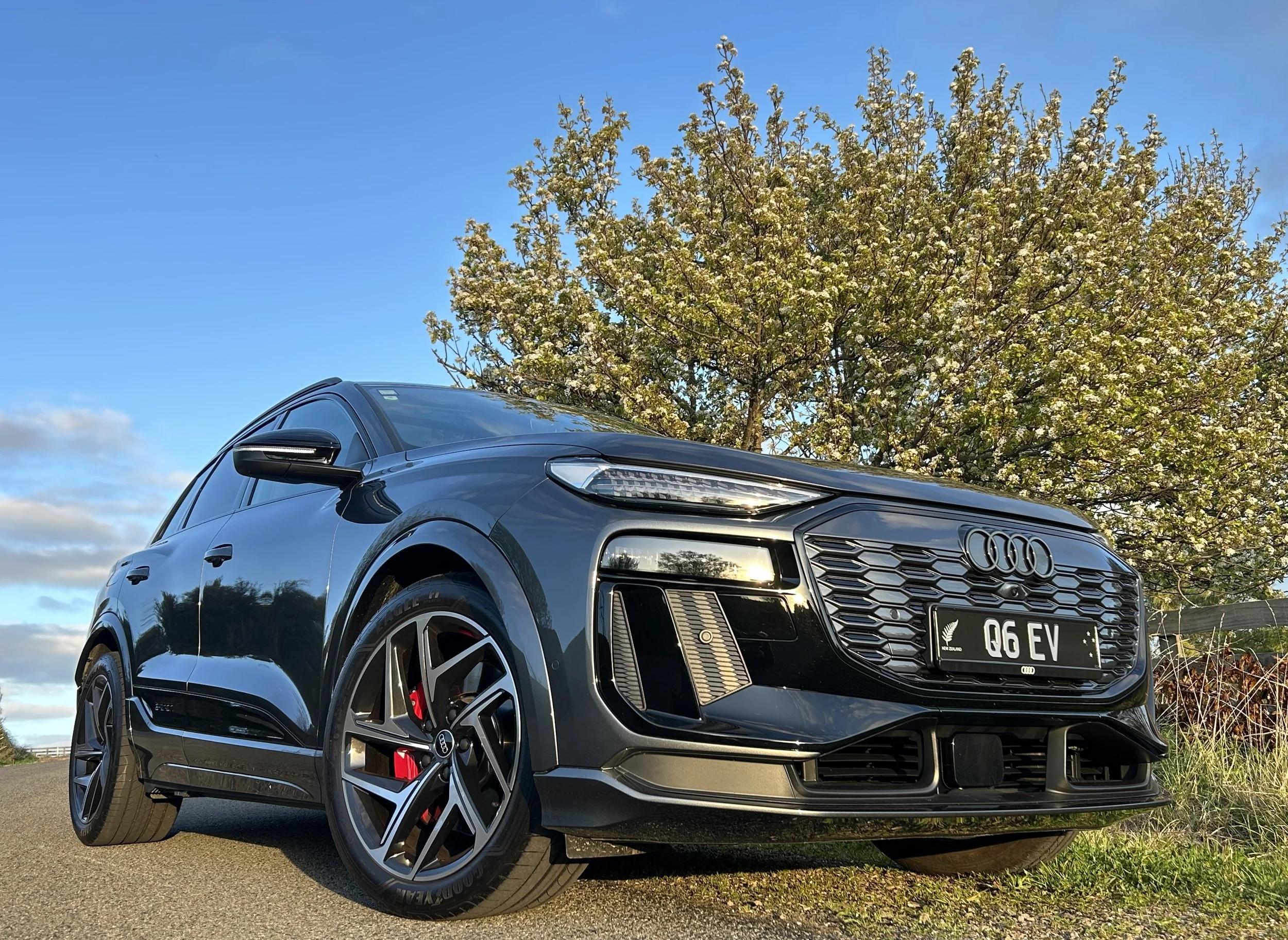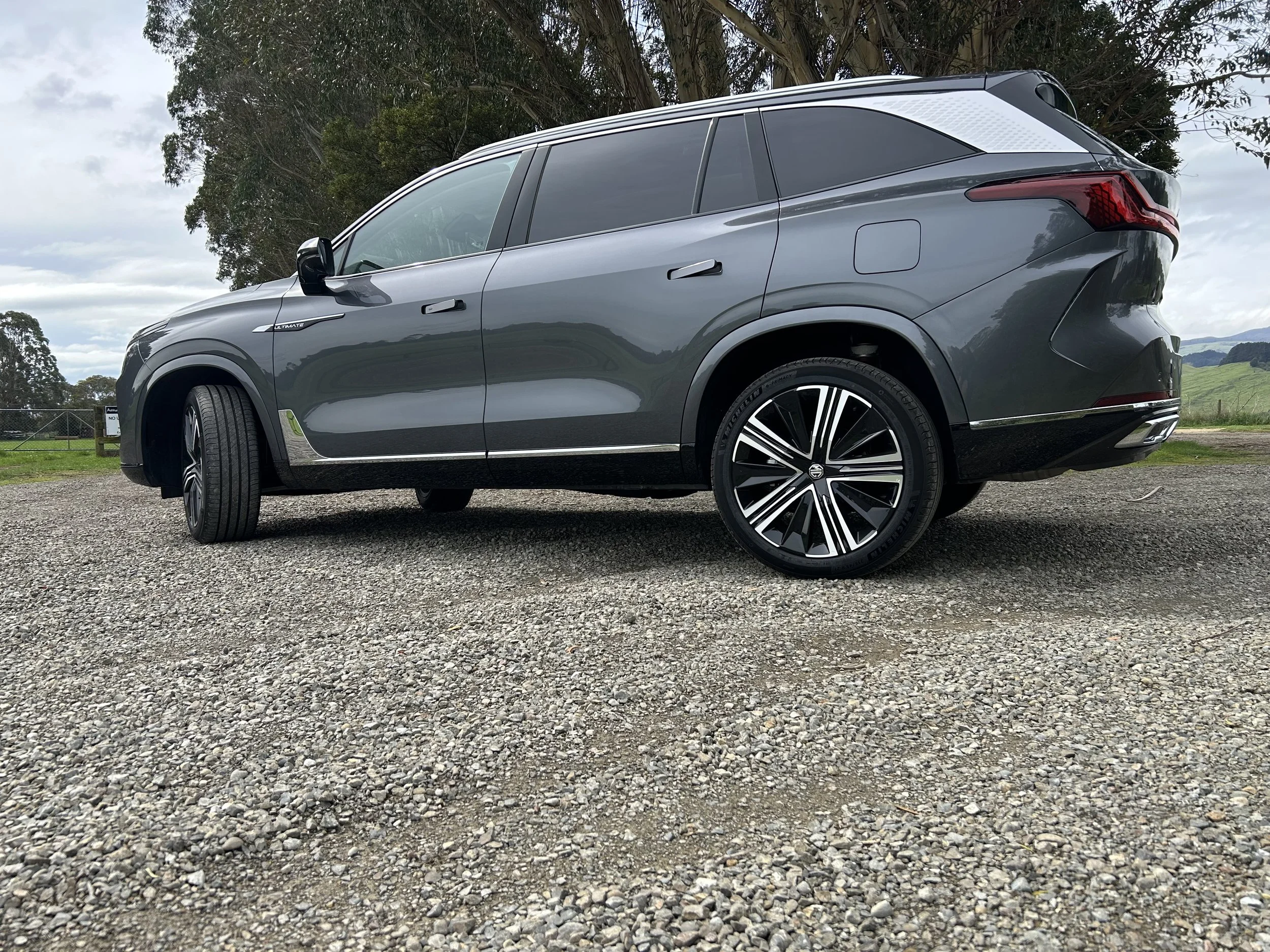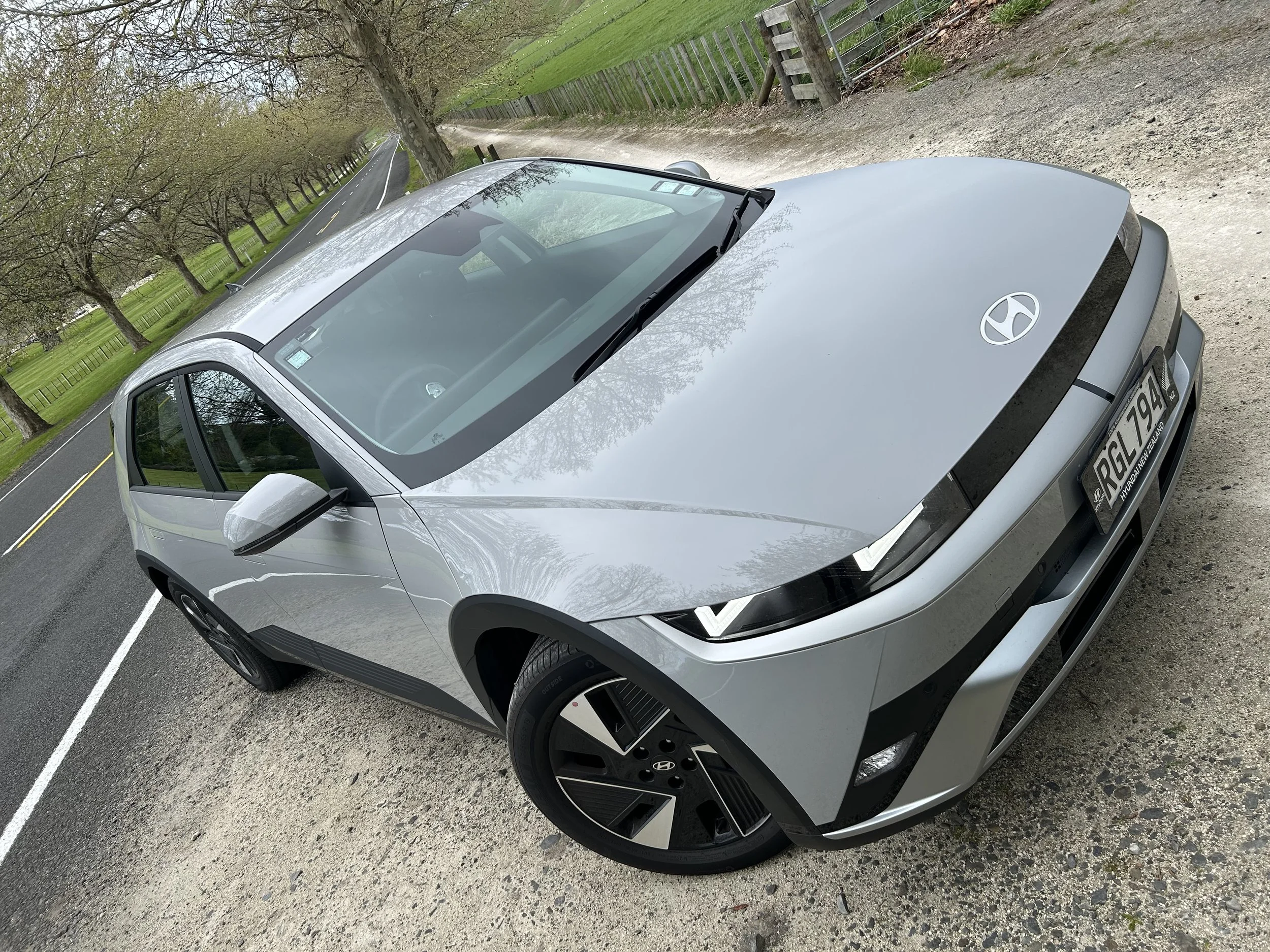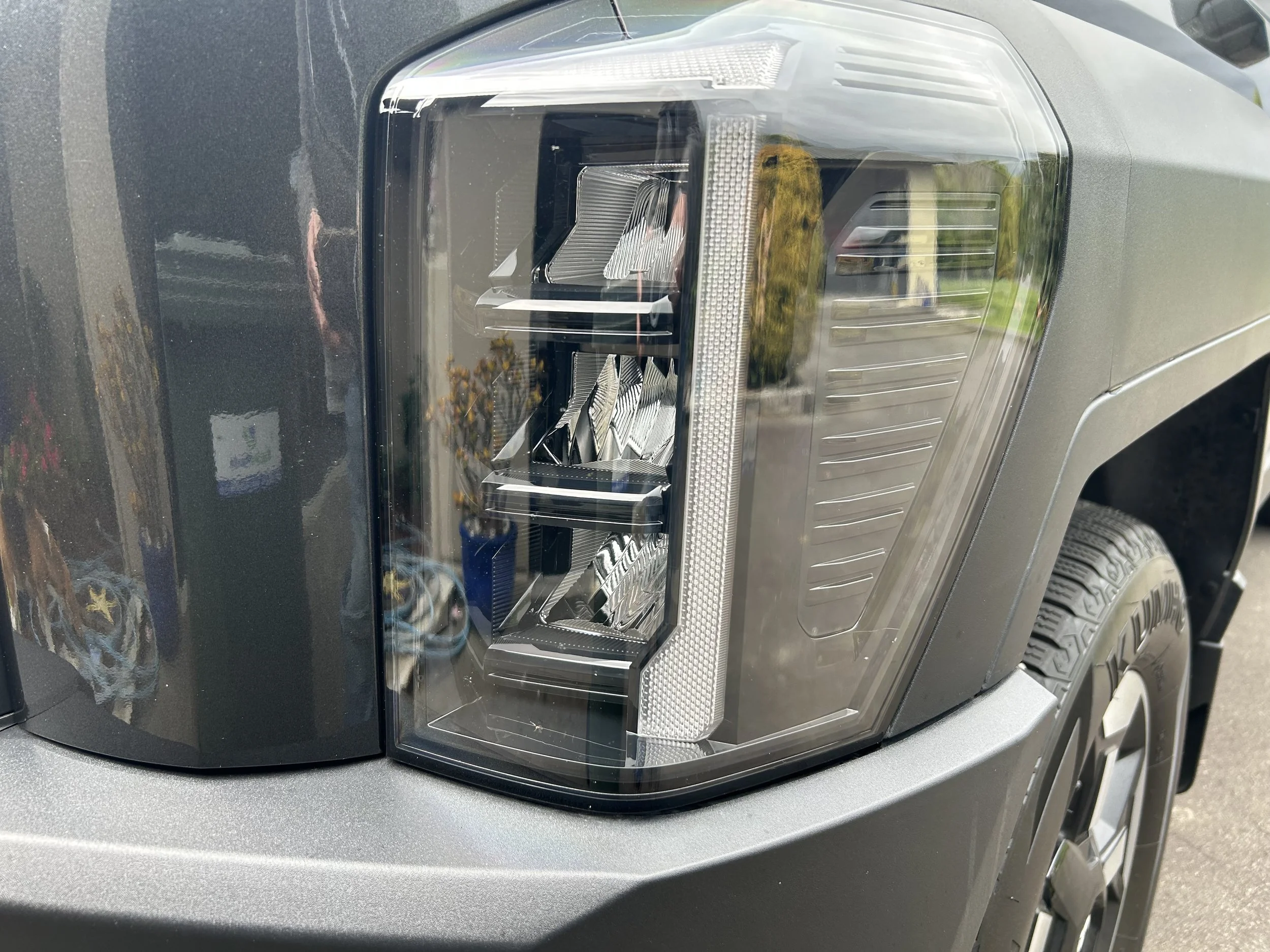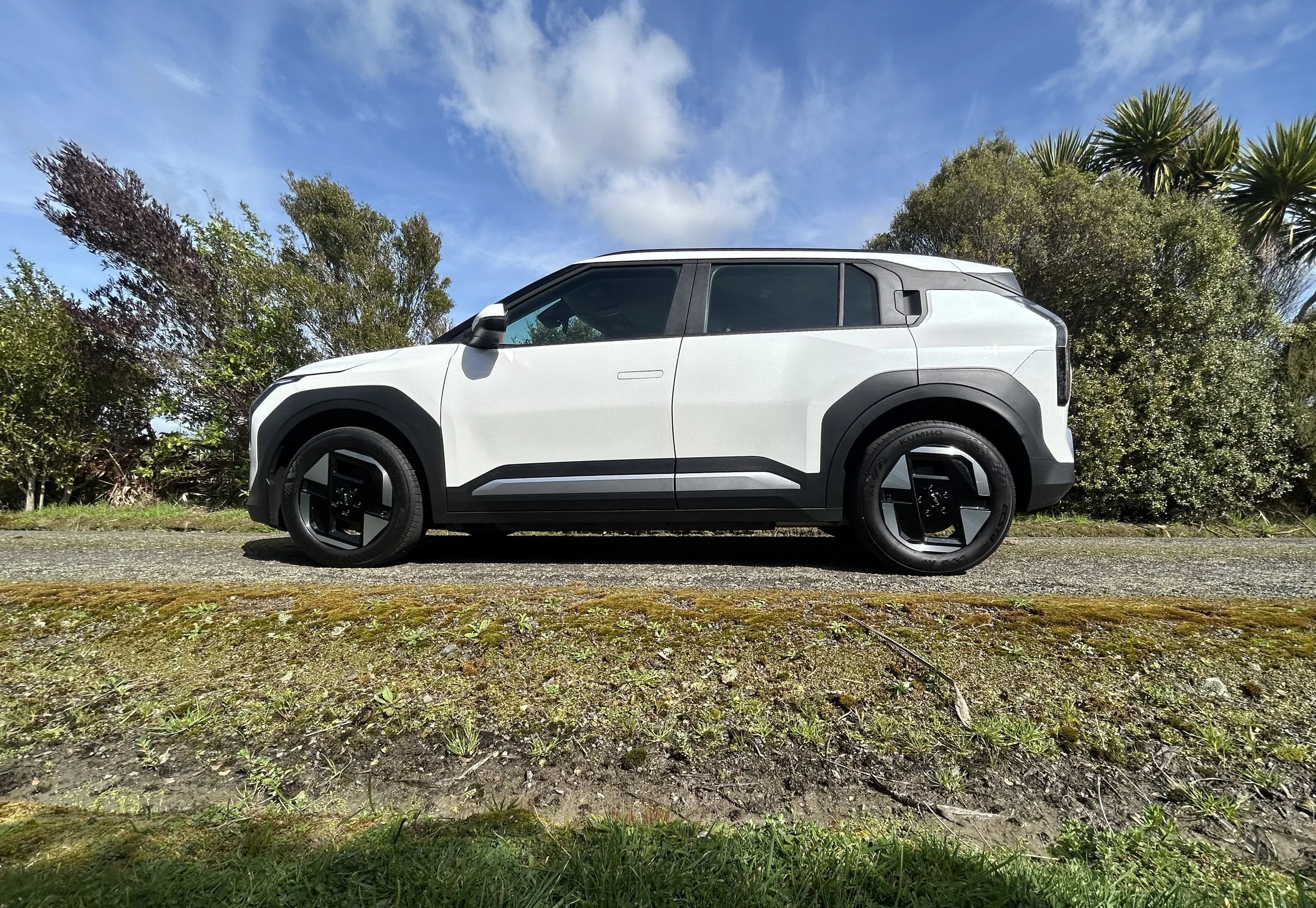Nissan Ariya Engage road test review: Deciduous decision
/The entry edition of this important model reminds that, despite being a delayed introduction, it enters the market with head held high.
Price: $59,990 (promotion), $76,990 full retail.
Powertrain: Single motor front drive 160kW/300Nm, 64kWh battery; single speed.
How big: 4595mm long, 2172mm wide, 1660mm high.
For: Acceptable range and performance; good driving feel; very refined.
Not so much: Nice to get the full suite of safety assists, a shame it sidesteps dearer types’ 360 camera; outdated infotainment graphics.
FOR most converts to electrics, change from oil to ohms is for good, with no turning back.
But at time when the automotive scene is moving at incredible pace, with no sector is showing faster pace in technology improvement than electrics, ownership circumstances could not be more challenging. EV residuals are cruel, depreciation is sobering and even some popular types can be hard to re-sell.
With that scenario, it’s hardly surprising to hear involvers cite thought that, rather than strive to buy into the latest, they prefer to hold on to what they have for as long as is possible and extract as much as they can from it.
Keeper philosophy seems a 101 for one fan base. With almost 24,000 registrations, the Nissan Leaf is comfortably the country’s highest proliferation EV. Most are used imports, quite a few are now elderly, with smaller batteries than it ultimately took, and, going by sentiment on-line fan forums, many of those early cars are nearing end of practical functionality. Time to say goodbye? logicially, yes. So it’s amazing how much effort is put into keeping operational cars patently at point of exhaustion.
All well and good, but with Leaf having now fallen from the family tree here, Nissan wants to move on … and, conceivably, it might wish those Leafisti came along for the ride.
What chance? For all the value of brand affiliation, reality is when you bought Leaf used and cheap, an upset to something fully new and far better will be significant. And for many, out of reach.
So, likely, the major interest in next year’s new Leaf, which divorces the hatchback theme to instead adopt the same sports utility with coupe overtones look, albeit in more compact style, look lent to Ariya now will be a new audience.
If to Ariya, which one? The flagship Evolve has a lot going for it, but even at its discounted sticker of $89,990, still asks almost three times as much as the best-priced NZ-new Leaf was at runout.
Logically, then, more chance goes to the type on test today, the Engage at the other end of this three pack, again a big step even with special pricing of $59,990 standing as a healthy drop on the $76,990 full retail ask, but logically nonetheless also the version that stands best chance of showing why it unavoidably sits above the spending band Leaf has occupied.
If you can’t see that, all I can say is take a look at this model in the metal. After more than a decade finessing the pioneering Leaf’s platform, with loads of real-world usage data to work with, Nissan said it applied these learnings to the Ariya. But only as a starting point.
Even cursory consideration will surely support argument Ariya is a far more advanced car. The core technology alone is a generation ahead and then some over Leaf’s. The battery being 33 percent thinner and also liquid cooled and heated now is, in its own right, a massive change for good.
The car itself is also markedly more up to the minute. Going to this battery leads to more interior room. And the body that encases it is so much stronger, more sensibly engineered. Which means it not only lends a safer experience, but also a superior driving feel. Even with Nismo tweaking, Leaf could hardly be considered a driver’s car. Ariya, on the other hand, feels huge benefit from having been a co-ordinated effort between Nissan and Renault (which uses this new CMF EV platform for its own purposes.) The Ariya just having a near 50/50 weight distribution is a big improvement on Leaf; the lower centre of gravity is also a positive.
That sort of stuff comes at cost. And, yes, even to achieve the price points Nissan has nominated for it, Engage has to deliver without some of the elements that go into the more expensive types. It is patently more conservatively appointed.
Yet the overall equipment provision is just as good as, if not in some ways better, than Leaf delivered even in its best-dressed format. It could also be contended that, within the Ariya ensemble, it delivers more than you might expect from a ‘base’ product.
No argument, all the same, that if maximum range and rapidity is your bent, this isn’t the best one.
With an 87kWh battery pack good for a range of 497km, feeding dual motors for a combined 290kW/600Nm via Nissan’s e-4orce all-wheel drive system, Evolve sends the stronger performance and range message. It is patently friskier, has superior traction, evidences a sportier dynamic and trims accordingly.
The Engage operates more quietly in look, feel and on-road attitude. Nissan reckons you will at best see 398 kilometres from the 63kWh battery feeding a 160kW/300Nm motor mounted on the front axle. That’s about on par with the starter models of the competition, but no more.
It is plainer inside and out; you immediately spot that it drops leather for fabric on the seats and everything you see and touch seems to be in a shade of sombre grey. There are no power seats, no power tailgate. While the safety suite is strong, it misses on the handy 360 camera view meted the dearer versions.
Yet, for overall functionality, it still presents as a strong expression of what Ariya is all about. Those factors, and given the significant saving, surely means it stands consideration.
Living with it was easy. Because of the more limited range, home recharging becomes more of an imperative, and in that respect you’ll have to budget for a wall charger, as there’s no three pin cable supplied with this car.
In saying that, it is a more convenient car by far than Leaf for public recharging; using water to cool the lithium ion battery pack lets the Ariya charge much faster, up to 150kW on a DC connection.
Also, while this effort didn’t test the absolutely validity of the factory range proposal, straight away you can be satisfied that, because Nissan has used the NZ-preferred WLTP calculation, their data will be more reliable than any figures spouted by brands - you know why they are - that rely on the far less authoritative, usually misleading NEDC methodology we’re getting rid of (often simply because it is more flattering).
Snuggling up to a charger, you’re reminded of the convenience of Leaf having the charging point on the tip of its nose, whereas on Ariya it’s on the nearside front wing.
Nissan obviously decided the full frontal provision had some shortcomings - risk of damaging it in any kind of impact seems to me to be the most valid reason for a rethink. At least, with Ariya, the port’s location now is considered as part of the car’s mirror-converted layout for right- and left-hand side, so is always on the kerbside when you parallel park.
You might see that as an example of advanced thinking, regardless the car isn’t so much. As new as it is here, this car is already comfortably into its production life; unveiled in 2020, it entered the world in 2022in itself a delayed birth, because of the pandemic and a global computer chip shortage.
With that in mind, the chiselled, sharp-edged look has stood the test; it’s a handsome thing, with clean lines and a faint sense of premium-ness about the whole operation. The metallic grey Nissan has chosen as the hero colour also really helps with that.
When slipping inside, there’s not too much to remind you of it having been in other places for rather longer than it has been here.
The cabin is clean and modern, overall. A low-profile gear selector in the centre console, a common six-button haptic array on the dash flanked by temperature controls for the driver and passenger, and identical twin 12.3-inch digital screens are design fundamentals spanning all Ariyas that lend to latest, if not slightly futuristic themes.
Generally, the materials are generally good, too, and though the plastics aren’t exactly soft to the touch, they don’t feel as though they’re made from recycled bottles, either. If there’s one grumble it’s to do with the screen displays; while the layouts make sense, the graphics and the fonts Nissan uses for all its lettering and displays are jarringly dated.
There’s reassurance from it ticking off all the core safety ingredients and also delivering with adaptive cruise control with lane-keep assist and rear automatic emergency braking with pedestrian detection. It even keeps LED lights front and rear
As a living space, Ariya’s cabin delivers really well. Thanks to the decent distance between the front and rear wheels and the flat floor, it’s significantly roomier than the Leaf and generally also measures up handsomely against rivals.
Oddment and storage space is decent. It keeps another clever flourish of a ‘hidden’ storage drawer that emerges from the dashboard at the touch of a button. One interesting touch in the Evolve is a motorised centre console; a feature allowing a driver to position the central armrest pod – with its secondary controls and storage features – exactly to preference. In Engage, there’s a fixed item that’s less useful yet, if you didn’t know there was a fancier way of doing things, you’d likely be happy enough.
The base trim absents the top spend’s glass roof, but is not the worse for it. Even with a solid roof, it has a really open, airy-feeling interior. Head room is generous and it has plenty of wider space for rear-seat occupants to stretch out in. The boot the boot isn’t too titchy on paper but is a slightly funny shape, though unless you’re filling it with rigid suitcases, it won’t be awkward.
The driving position is no different in the Engage than in the Evolve, and you’d assume the seat design is much the same; yet the base type seems less well-formed and softer. It’s still comfortable, but not as good as the dearer type’s.
The platform making this car front-wheel drive in its low-powered form might also seem an age indicator; since it came out. Some more recent rivals have adopted rear-wheel-drive layouts.
The format is well tamed, all the same. The kind of drive motor seems to be influential. Nissan calls it ‘electrically excited’ – the rotor being driven by opposed electromagnetic fields, which makes it a little less given to producing efficient torque at low motor speeds than some, but more efficient at cruising speeds, according to Nissan.
Whether it is this or simply the way that Nissan has tuned it and the throttle modulation, but the abruptness that comes with electric is mostly quelled. That’s not to say torque never disrupts the front wheels.
Fast departures under power from intersections can have the car is scrabbling for grip. In general driving, though, there’s barely any sense of torque steer. Overall, Nissan’s chief dynamic aim - to make the Ariya secure, stable and easy to drive - seems validated.
In respect to that, going to a smaller rim and tyre also benefits; while the Evolve’s combination of a 20-inch alloy and 255/45 R20 tyre looks smashing, and undoubtedly abets grip, the Engage on 235/55 R19s has a smoother, quieter ride. A shame the alloy rim styling is much less eye-catching.
The base car’s gait is more relaxed than the Evolve’s and, in some ways, this better suits the Ariya's style. It all depends on your driving style.
Decent open road performance is within the Engage’s gambit, and the battery being packaged with mind to lower the Ariya’s centre of gravity and stiffen its body structure is a fundamental plus to how it handles.
The suspension settings here seem softer than with Evolve, and that has influence on the dynamic aspect. When you go through faster bends, the base car leans more.
On the other hand, it is less affected by surface texture and arguably does a better job of soaking up the bigger bumps. That road noise is so low is no great surprise, given the lengths Nissan went to to achieve a whisper-quiet cabin included double-glazed glass for the windows, an acoustic windscreen and thick carpet.
It isn’t the most exciting car to drive - push too hard and it’s easy to get those economy-focussed Bridgestone Atenza tyres to squeal - but nonetheless it imparts a good vibe; there’s a much about how it deports to suggest development was left to sensible hands.
Still, where it really … well, engages … is as an urban transport device. The car’s physical dimension is no impediment and the battery’s weight and a wheelbase that has been stretched as far as possible to make room for it are elements that make it feel almost regal, with excellent refinement. It’s among the more calming EVs in this price range.
There are no steering wheel paddles for the adjustment of brake energy regeneration, so when employing the ‘e-pedal’ accelerator and regenerative braking you’re stuck with the mode set by Nissan’s engineers. The system’s ability to automatically gauge the level of energy regeneration depends on your speed and what’s around you. It is fine for urban running. At low-speed one-pedal driving is easy and smooth. But hit the highway and you’ll turn it off, as it then becomes too intrusive.
If you want to get close to the official efficiency figure, logic suggests using the Eco setting, which blunts the power delivery, but allows the car to maximise its range, particularly around town. The other modes make the car feel livelier.
There’s no shortage of rivals for Ariya, some from other well-established brands, others from outlier newcomers keen to make an imprint.
Driving Ariya in this Engage treatment reinforced what it often the case with EVs; that you don’t need to spend all out to get the best of what they have to offer. All the same, there’s an uneasy sense it faces enough of a battle already at the special reduced price. You’d have to assume life at the full RRP will be so much harder.


